Second pupa! Also, she has not stopped laying eggs.
- Formiculture.com
- Forums
- Gallery
- Members
- Member Map
- Chat

Update 20.xi.2021
So, very big news; both good and bad. Good news first - There is now a callow! There is also two pupae and eight larvae. Now for the unfortunate news - The queen has eaten all ten of her secon generation eggs due to the stress induced from daily feedings I suppose. I have moved the tube to a warmer spot because I did notice it was taking a prolonged amount of time to develope.
Here's a video of the callow.
yay!!!!!!
1X Pogonomyrmex occidentalis 40-50 Workers
1X Solenopsis molesta 10 Workers (mono)
Ants I Want: Crematogaster sp, Camponotus Sp., Ponera Pennsylvanica, Mymercocystus sp.
My Youtube channel: https://www.youtube....kUjx-dPFMyVqOLw
Join Our Fledgling Discord Server https://discord.com/...089056687423489
Second worker eclosed today.
Update 5.xii.2021
Since the last post I have moved them to a tub and tube setup, so that i don't have to move the tube to feed proteins and sugars. This also allows them to stay out of direct light when feeding. All of this has helped to make the queen start laying eggs again, which she has done. There isn't any new pupae which hopefully will change in the near future.
Update 27.xii.2021
Not much advancement has happened since the last update. I have since moved them out of a tub and tube and have now went back to feeding in the tube. While they were in the tub and tube set up one of the workers unfortunately died for no apparent reason. It turned out that the same worker that died had not been foraging proteins and had just been drinking sugars. This lack of protein significantly hindered the brood development and is the most likely reason the queen kept eating her eggs. Since I have started feeding in the tube, the queen laid five or six more eggs which have now became larvae. One of the first generation larvae, yes they are still larvae, has now started to pupate; so at least there will be a new worker in a couple weeks. I am thinking about heating the edge of the tube directly with a heat cable instead of the incubator, but I'm affraid it will form a lot of condensation due to the temperature difference in my room. Anyways, I did get around to making a setup for them for when the colony is large enough. It is an acrylic box with a 3D printed rack that holds five 8mm ID glass tubes.
Update 27.xii.2021
Not much advancement has happened since the last update. I have since moved them out of a tub and tube and have now went back to feeding in the tube. While they were in the tub and tube set up one of the workers unfortunately died for no apparent reason. It turned out that the same worker that died had not been foraging proteins and had just been drinking sugars. This lack of protein significantly hindered the brood development and is the most likely reason the queen kept eating her eggs. Since I have started feeding in the tube, the queen laid five or six more eggs which have now became larvae. One of the first generation larvae, yes they are still larvae, has now started to pupate; so at least there will be a new worker in a couple weeks. I am thinking about heating the edge of the tube directly with a heat cable instead of the incubator, but I'm affraid it will form a lot of condensation due to the temperature difference in my room. Anyways, I did get around to making a setup for them for when the colony is large enough. It is an acrylic box with a 3D printed rack that holds five 8mm ID glass tubes.
pics???
pics needed. also, good job on such a cool species.
Ants I am keeping:
none for now, planning on being more active this year
Last night I moved the colony to being heated by a heat cable and well, it definitely helped. The pupating larva is now a pupa compared to the last larva taking over a week to form into a pupa. They definitely love the heat, they piled all their brood directly over the heat cable. The tube is quite dirty from months of near-daily feedings - I will probably go in with a warm and damp cotton swab and try to clean it up or just move them to a new tube which will be easy since there is no eggs and only one worker.
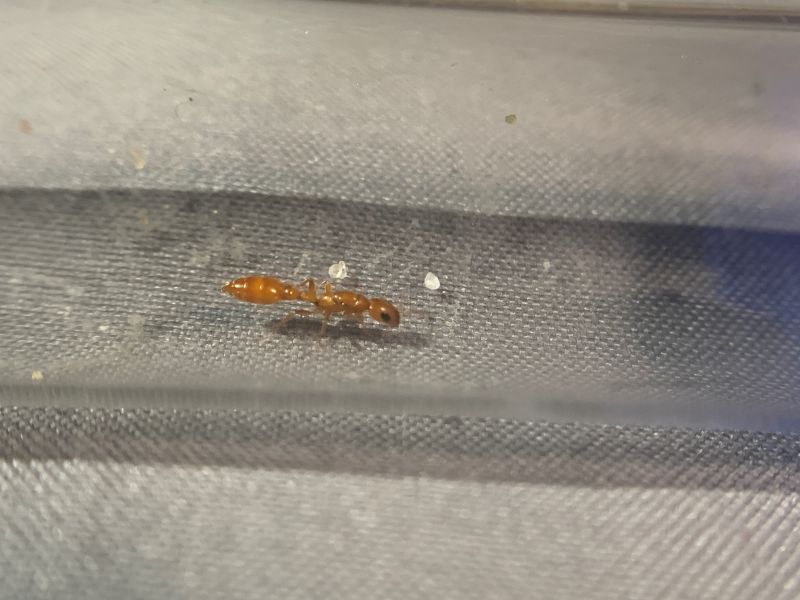
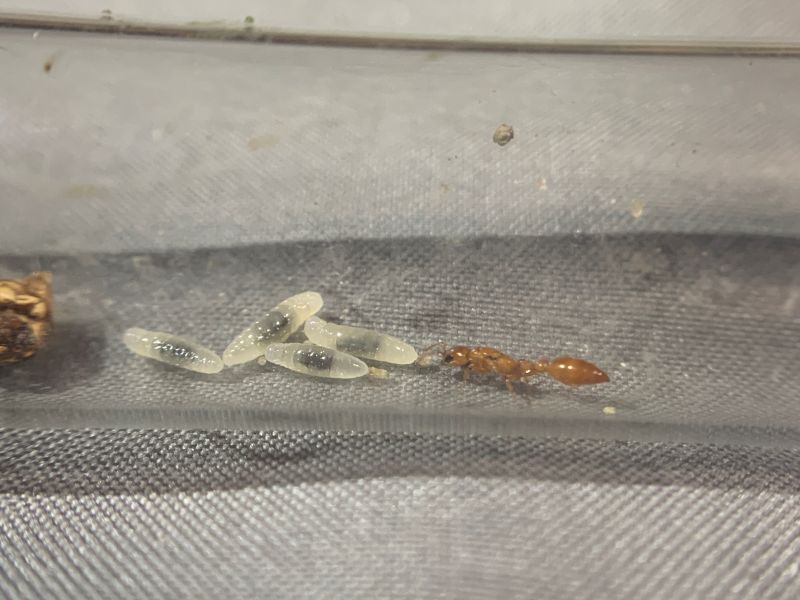
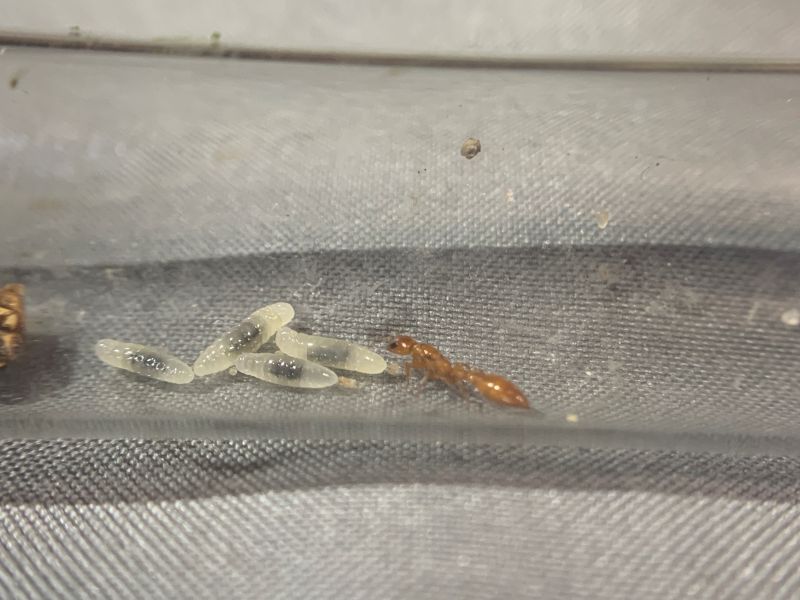
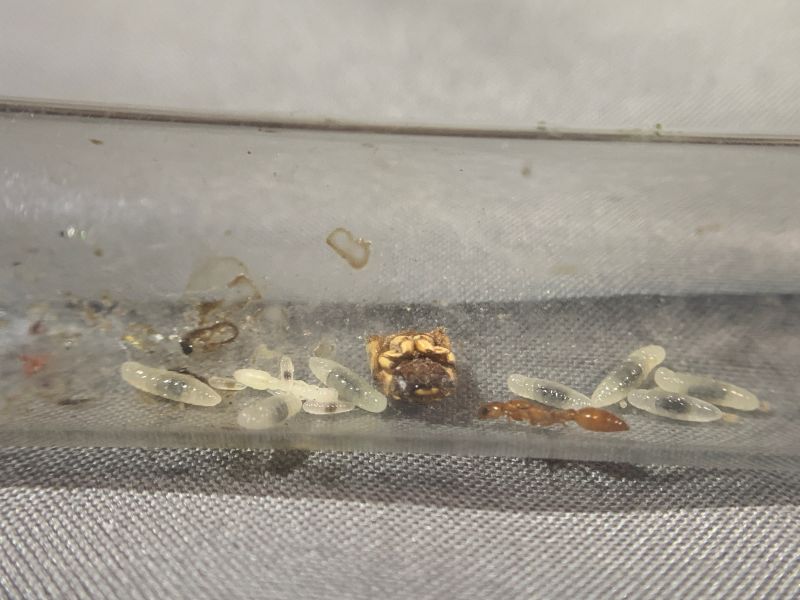
Update 14.i.2022
After what seems like forever the pupa has fianlly eclosed. Hopefully this worker will help the larvae to develop a bit faster since it seems as the queen doesn't feed them as much. I need to transfer them to a new tube soon, not looking forward to that. Luckily there is only one worker, which hopefully won't make it too difficult. Pictures will come soon.
Edited by ReignofRage, January 14 2022 - 7:54 PM.
So here's some info about Pseudomyrmex. Even though this is not P.Pallidus they're still Pseudomyrmex and what I noticed when I had my palldidus was that they are really stubborn in moving. Palldidus are so stubborn to the point that they'd rather stay in their dried up test tube than living in a brand new test tube.
Dumping them into another test tube won't be that difficult.
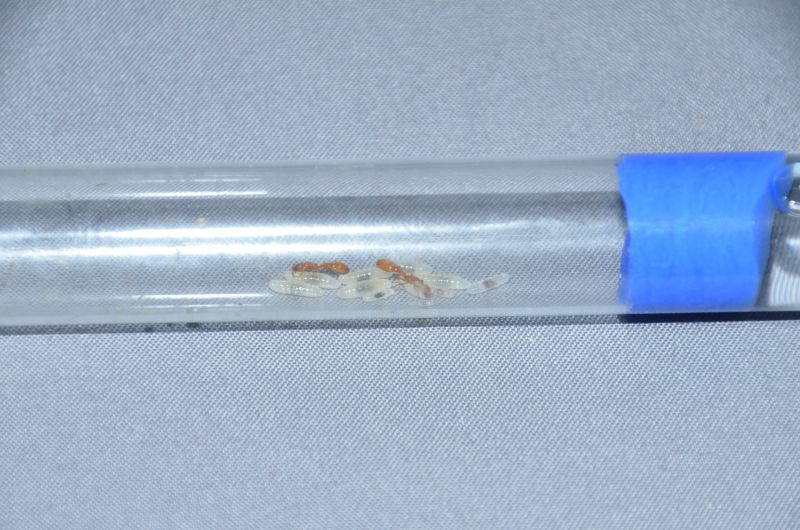
Here's a picture, there is now a pupating larva and a new egg. The big larvae are still alive, just for some reason they don't want to pupate despite being kept warm, haha. This time with the worker things should go smoother since they are being heated warmer which will help brood development time significantly. My suspicion that the queen was not caring for the brood as much as they needed was also confirmed recently as well. The worker has been feeding the younger larvae a lot more than the queen was which was shown by the larvae doubling in size. Another good thing is the queen seems to be a bit more physogastric than she has been in a long while, so hopefully that means a lot more eggs come along soon.
Here's a picture, there is now a pupating larva and a new egg. The big larvae are still alive, just for some reason they don't want to pupate despite being kept warm, haha. This time with the worker things should go smoother since they are being heated warmer which will help brood development time significantly. My suspicion that the queen was not caring for the brood as much as they needed was also confirmed recently as well. The worker has been feeding the younger larvae a lot more than the queen was which was shown by the larvae doubling in size. Another good thing is the queen seems to be a bit more physogastric than she has been in a long while, so hopefully that means a lot more eggs come along soon.
nice!!!! ![]()
Update 30.i.2022
Well, things definitely took a good turn. The mention of the queen being more physogastric has now turned into the queen laying 20 to 21 eggs in around one week - this is a lot faster than the one egg per day or skip a day and lay two. The queen is noticably more physogastric this time around that the previous times; so I do hope the queen continues to lay more eggs or even better just doesn't stop. There is also two pupae now as well which will be helpful when they become workers.On another note, I do find it interesting how this colony has never really kept their eggs in a pile, but always keep them strewn across the larvae and pupae (the pictures show the most organized they have kept their eggs so far).
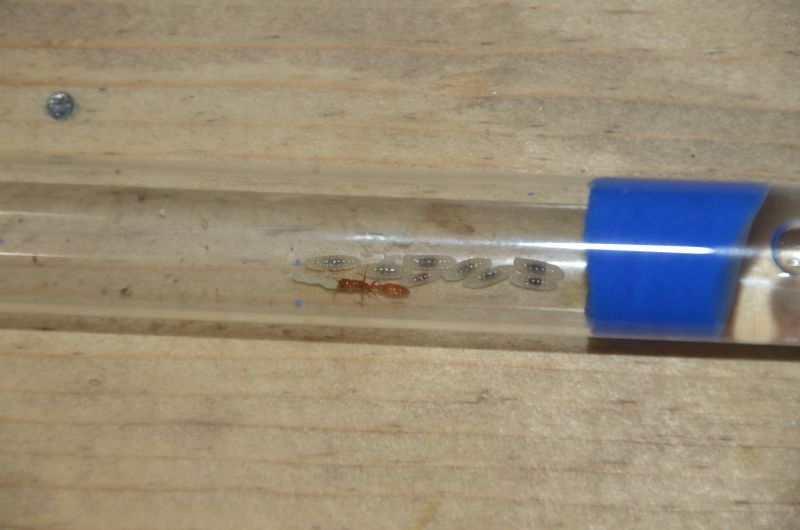
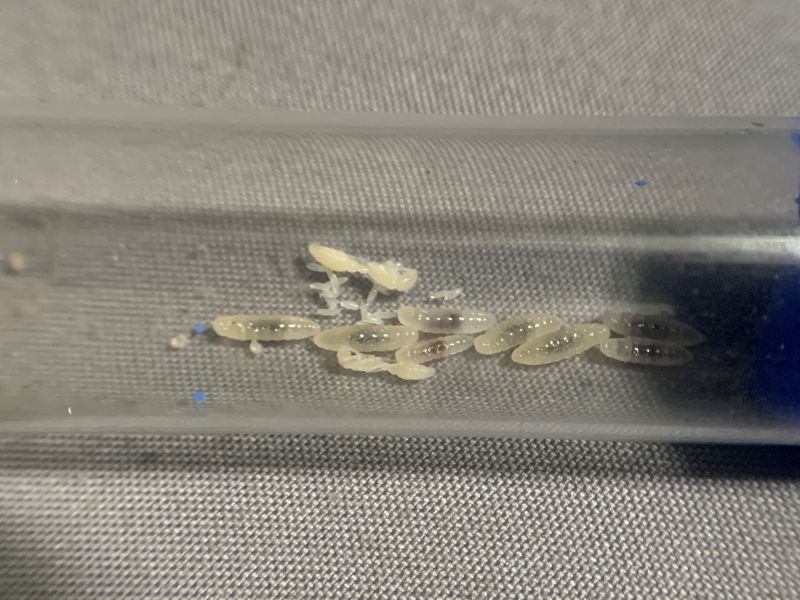
Forgot to make an update, so I will just put it here. After a few workers eclosed, the queen died to bad sugar water that also killed a couple other queens I had. Something that I found interesting was the brood development of the brood left over was explosive even after I stopped feeding protein. So, the queen was definitely a big hinderance on this colony's growth.
Edited by ReignofRage, June 17 2022 - 8:20 PM.
0 members, 4 guests, 0 anonymous users